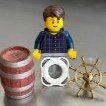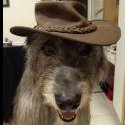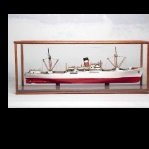
Rick310
NRG Member-
Posts
787 -
Joined
-
Last visited
-
 Keith Black reacted to a post in a topic:
RRS Discovery 1901 by gak1965 - 1:72 - First Scratch Build
Keith Black reacted to a post in a topic:
RRS Discovery 1901 by gak1965 - 1:72 - First Scratch Build
-
 Canute reacted to a post in a topic:
RRS Discovery 1901 by gak1965 - 1:72 - First Scratch Build
Canute reacted to a post in a topic:
RRS Discovery 1901 by gak1965 - 1:72 - First Scratch Build
-
 KeithAug reacted to a post in a topic:
Cangarda 1901 by KeithAug - Scale 1:24 - Steam Yacht
KeithAug reacted to a post in a topic:
Cangarda 1901 by KeithAug - Scale 1:24 - Steam Yacht
-
 Keith Black reacted to a post in a topic:
Cangarda 1901 by KeithAug - Scale 1:24 - Steam Yacht
Keith Black reacted to a post in a topic:
Cangarda 1901 by KeithAug - Scale 1:24 - Steam Yacht
-
 RVB reacted to a post in a topic:
Picket Boat #1 by RVB (Rick) - FINISHED - Model Shipways - Scale 1/24
RVB reacted to a post in a topic:
Picket Boat #1 by RVB (Rick) - FINISHED - Model Shipways - Scale 1/24
-
 robert952 reacted to a post in a topic:
Picket Boat #1 by RVB (Rick) - FINISHED - Model Shipways - Scale 1/24
robert952 reacted to a post in a topic:
Picket Boat #1 by RVB (Rick) - FINISHED - Model Shipways - Scale 1/24
-
 Canute reacted to a post in a topic:
USS Pillsbury DD-227 by michael.denigan - BlueJacket Shipcrafters - 1/96
Canute reacted to a post in a topic:
USS Pillsbury DD-227 by michael.denigan - BlueJacket Shipcrafters - 1/96
-
 Canute reacted to a post in a topic:
USS Pillsbury DD-227 by michael.denigan - BlueJacket Shipcrafters - 1/96
Canute reacted to a post in a topic:
USS Pillsbury DD-227 by michael.denigan - BlueJacket Shipcrafters - 1/96
-
Rick what a great job!! Everything about this build is first rate!! Well done!! Rick
- 167 replies
-
- Picket Boat
- Model Shipways
-
(and 1 more)
Tagged with:
-
Micheal, just sent you my email address. I think it would be worthwhile to post the thread for others interested in building this model. Rick
- 37 replies
-
- Pillsbury
- Clemson-class
-
(and 1 more)
Tagged with:
-
I’m planning on modeling the Ward Any photos would be great and much appreciated!! Rick
- 37 replies
-
- Pillsbury
- Clemson-class
-
(and 1 more)
Tagged with:
-
 Mark Pearse reacted to a post in a topic:
Ranger type yacht by Mark Pearse - 1:12 - SMALL
Mark Pearse reacted to a post in a topic:
Ranger type yacht by Mark Pearse - 1:12 - SMALL
-
 Canute reacted to a post in a topic:
USS Pillsbury DD-227 by michael.denigan - BlueJacket Shipcrafters - 1/96
Canute reacted to a post in a topic:
USS Pillsbury DD-227 by michael.denigan - BlueJacket Shipcrafters - 1/96
-
This is a really nice build!! I’m particularly interested because I have the same kit from Bluejacket and it’s up next when I get done with the Flying Fish. Thanks for leading the way! Rick
- 37 replies
-
- Pillsbury
- Clemson-class
-
(and 1 more)
Tagged with:
-
 Rick310 reacted to a post in a topic:
Loreley 1884 by Ilhan Gokcay - 1/75 - Scale Steam Yacht
Rick310 reacted to a post in a topic:
Loreley 1884 by Ilhan Gokcay - 1/75 - Scale Steam Yacht
-
 Rick310 reacted to a post in a topic:
Loreley 1884 by Ilhan Gokcay - 1/75 - Scale Steam Yacht
Rick310 reacted to a post in a topic:
Loreley 1884 by Ilhan Gokcay - 1/75 - Scale Steam Yacht
-
George, you are making great progress!! Discovery looks great! Good job on the aft deck houses! As an aside, I once went to a Gordon Lightfoot concert in the flats and he was singing The Wreck of the Edmond Fitzgerald just as a freighter was coming up the Cuyahoga river from Lake Erie! The crew were gathered on deck by the rail listening to the song! Rick
About us
Modelshipworld - Advancing Ship Modeling through Research
SSL Secured
Your security is important for us so this Website is SSL-Secured
NRG Mailing Address
Nautical Research Guild
237 South Lincoln Street
Westmont IL, 60559-1917
Model Ship World ® and the MSW logo are Registered Trademarks, and belong to the Nautical Research Guild (United States Patent and Trademark Office: No. 6,929,264 & No. 6,929,274, registered Dec. 20, 2022)
Helpful Links
About the NRG
If you enjoy building ship models that are historically accurate as well as beautiful, then The Nautical Research Guild (NRG) is just right for you.
The Guild is a non-profit educational organization whose mission is to “Advance Ship Modeling Through Research”. We provide support to our members in their efforts to raise the quality of their model ships.
The Nautical Research Guild has published our world-renowned quarterly magazine, The Nautical Research Journal, since 1955. The pages of the Journal are full of articles by accomplished ship modelers who show you how they create those exquisite details on their models, and by maritime historians who show you the correct details to build. The Journal is available in both print and digital editions. Go to the NRG web site (www.thenrg.org) to download a complimentary digital copy of the Journal. The NRG also publishes plan sets, books and compilations of back issues of the Journal and the former Ships in Scale and Model Ship Builder magazines.






